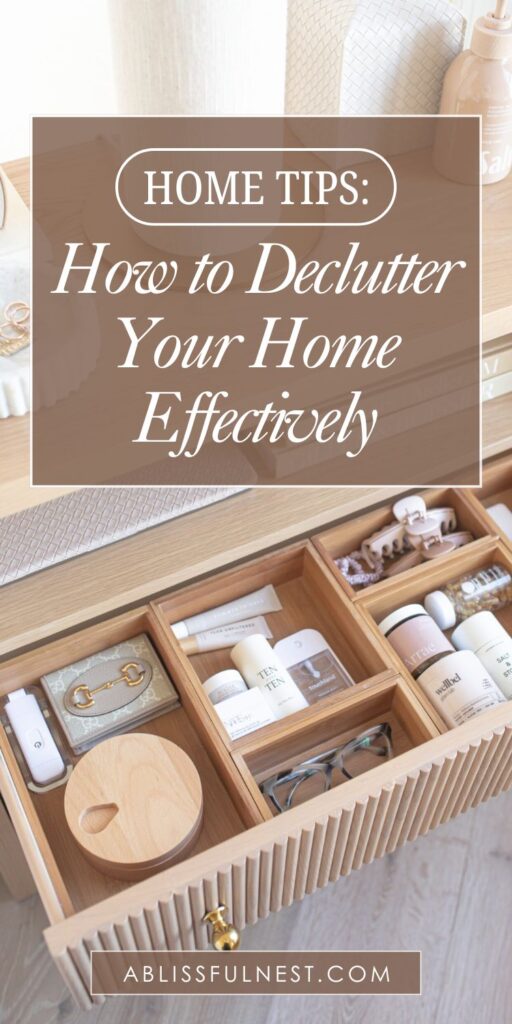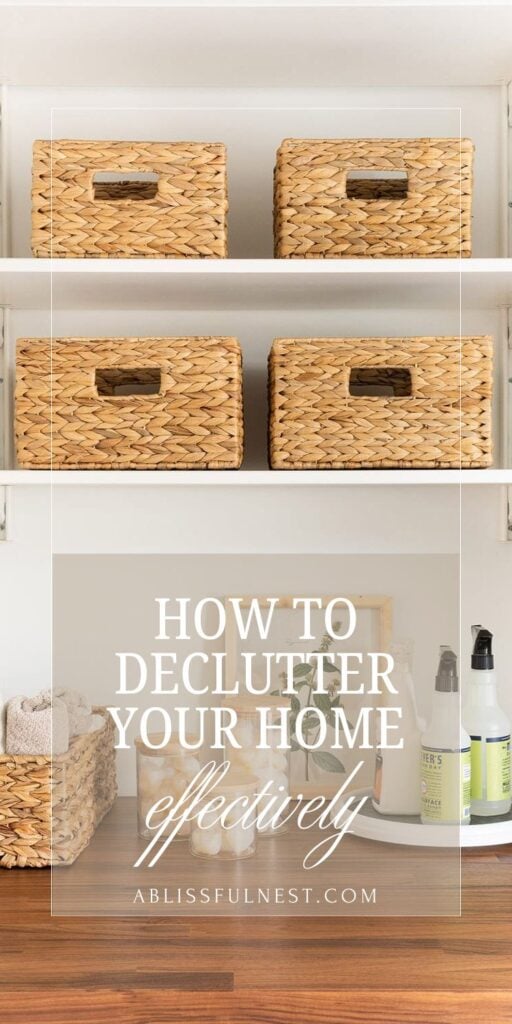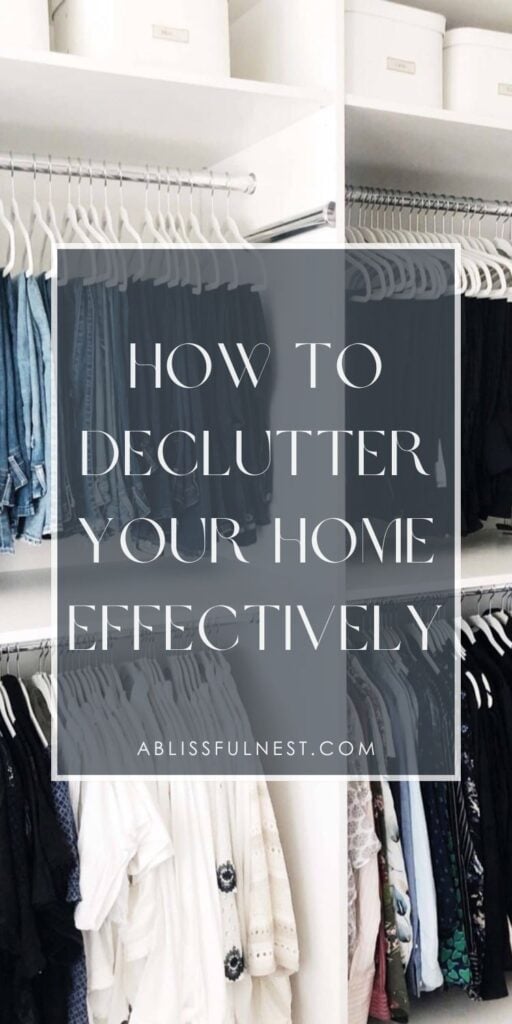Learning how to declutter your home effectively can feel like an impossible task when every room feels full and nothing seems to stay organized for long.
You scroll through decluttering ideas, hoping something will stick, but most days you’re too tired or busy to even start.
Your counters are covered, drawers are packed, and closets hold clothes you haven’t worn in years but can’t seem to part with.
Maybe you’ve tried cleaning before, but it never lasts because nothing really has a place, or the clutter just shifts from room to room.
Over time, clutter starts to affect your mood, your energy, and even how you feel when you walk into your own home.
It’s frustrating when simple things like cooking or doing laundry take twice as long because of all the stuff in the way.
Buying more bins or baskets doesn’t fix the problem if you’re not getting rid of what you don’t need.
This post may contain affiliate links. As an Amazon Associate and a participant in other affiliate programs, I earn a commission on qualifying purchases at no additional cost to you.
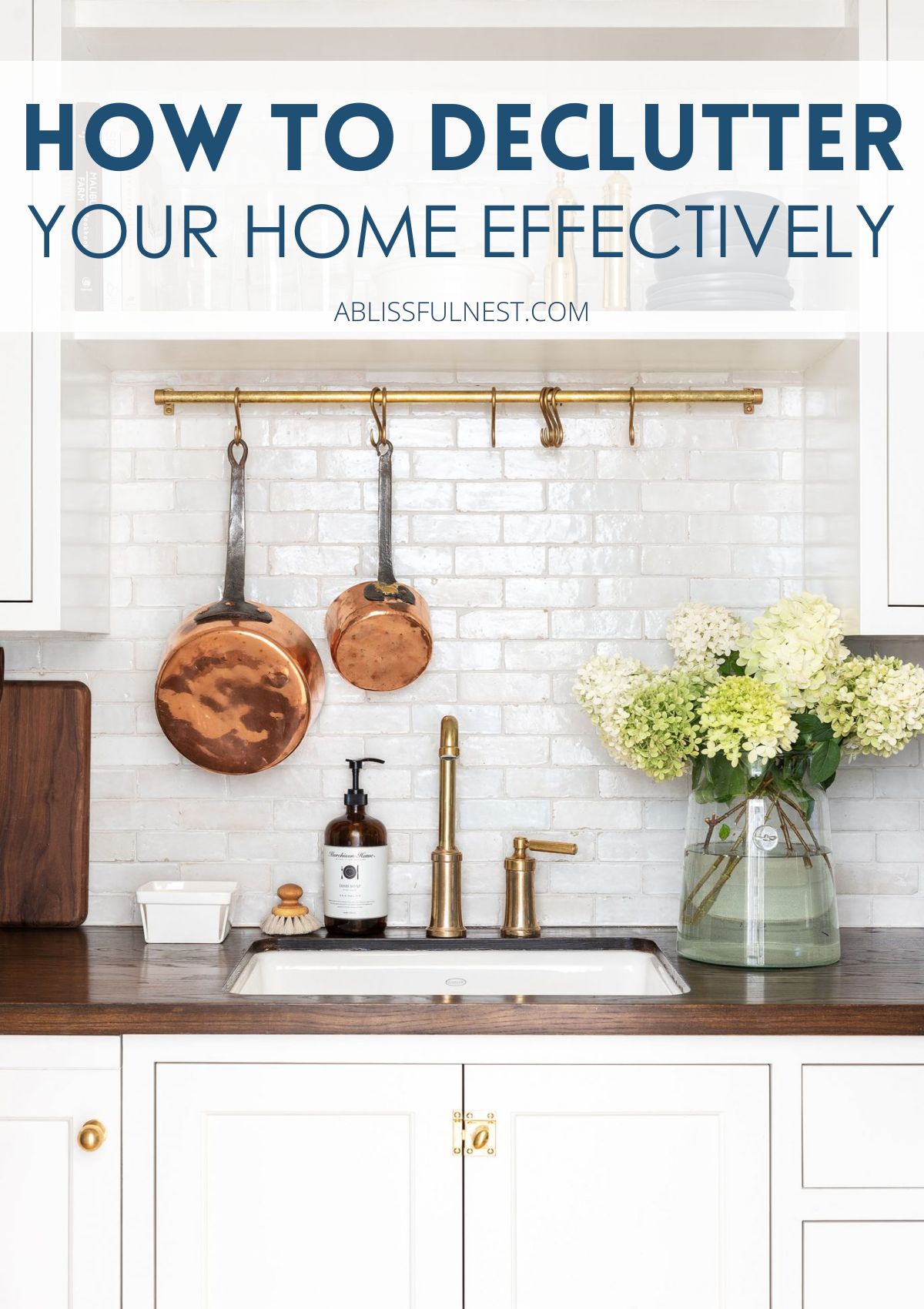
You might think you don’t have time, but the real challenge is not having a plan or knowing where to begin.
The good news is you don’t need to tackle it all in one day to see progress and feel a sense of control again.
Once you start using smart systems and routines, you’ll discover how decluttering your home can change your space and your peace of mind.
Why Decluttering Your Home Matters
Learning how to declutter your home isn’t just about how it looks. It’s about creating a space that’s easier to live in and more supportive of your daily life.
When clutter piles up, it becomes harder to clean, harder to focus, and harder to relax at the end of a long day.
You waste time searching for things you know you own but can’t seem to find because drawers, cabinets, and closets are too full.
Clutter can even affect your mood, making your home feel heavy, disorganized, or chaotic instead of peaceful and welcoming.
By removing what you no longer use, you create space for what truly matters, whether that’s quality family time or simply more breathing room.
Less stuff means less stress and fewer distractions, so you can focus more on the things that bring joy and purpose to your life.
With less to manage, your home becomes easier to clean and maintain, giving you more time and energy for what matters most.
Decluttering also gives you a fresh start and helps you make better choices about what to bring into your home in the future.
It’s not about having a perfect space. It’s about creating a place that works for you, feels right, and gives you peace every day.
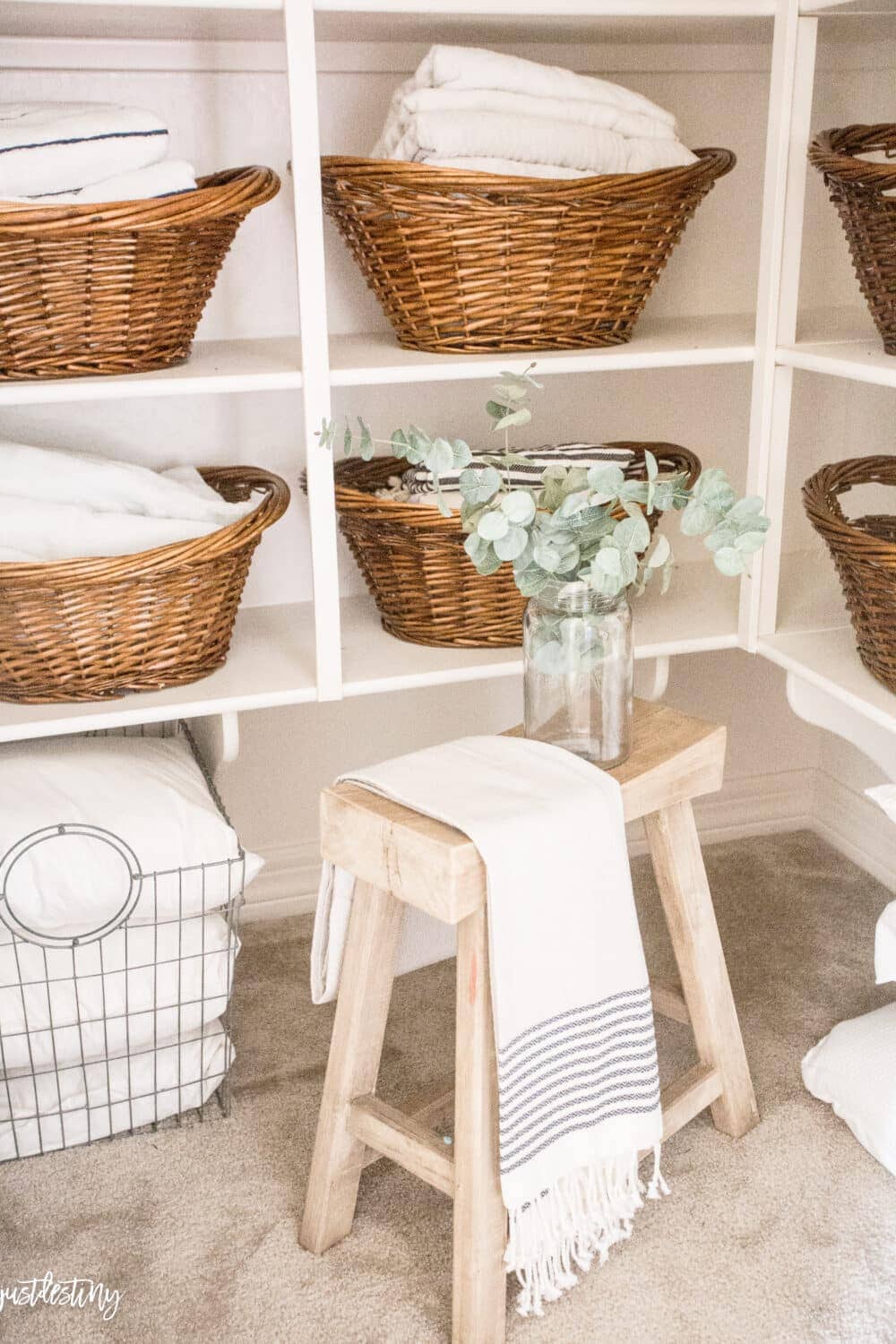
Signs It’s Time to Declutter Your Home
When your home feels more overwhelming than restful, that’s often your first sign that something needs to change.
Clutter builds up quietly but shows up loud in everyday frustrations, so I’ve listed the most common signs it’s time to declutter your home.
- You feel stuck or weighed down by stuff that no longer fits your current life or needs.
- You feel stressed or tired just looking at your space, even when you haven’t done much that day.
- You lose track of simple items like scissors, phone chargers, or your favorite mug because they’re buried under piles.
- You keep moving clutter from one room to another instead of putting it away or getting rid of it.
- Your drawers and cabinets are hard to open or overflowing with things you forgot you even had.
- You buy duplicates because you can’t find the items you already own when you need them.
- Your home feels cramped, even if it’s not small, because unused or unnecessary items are taking up valuable space.
- Every day tasks like cooking or cleaning feel harder because clutter is always in the way.
- You avoid certain rooms because they feel messy, disorganized, or impossible to tackle.
- Surprise visitors make you anxious because your space doesn’t feel tidy or guest-ready.
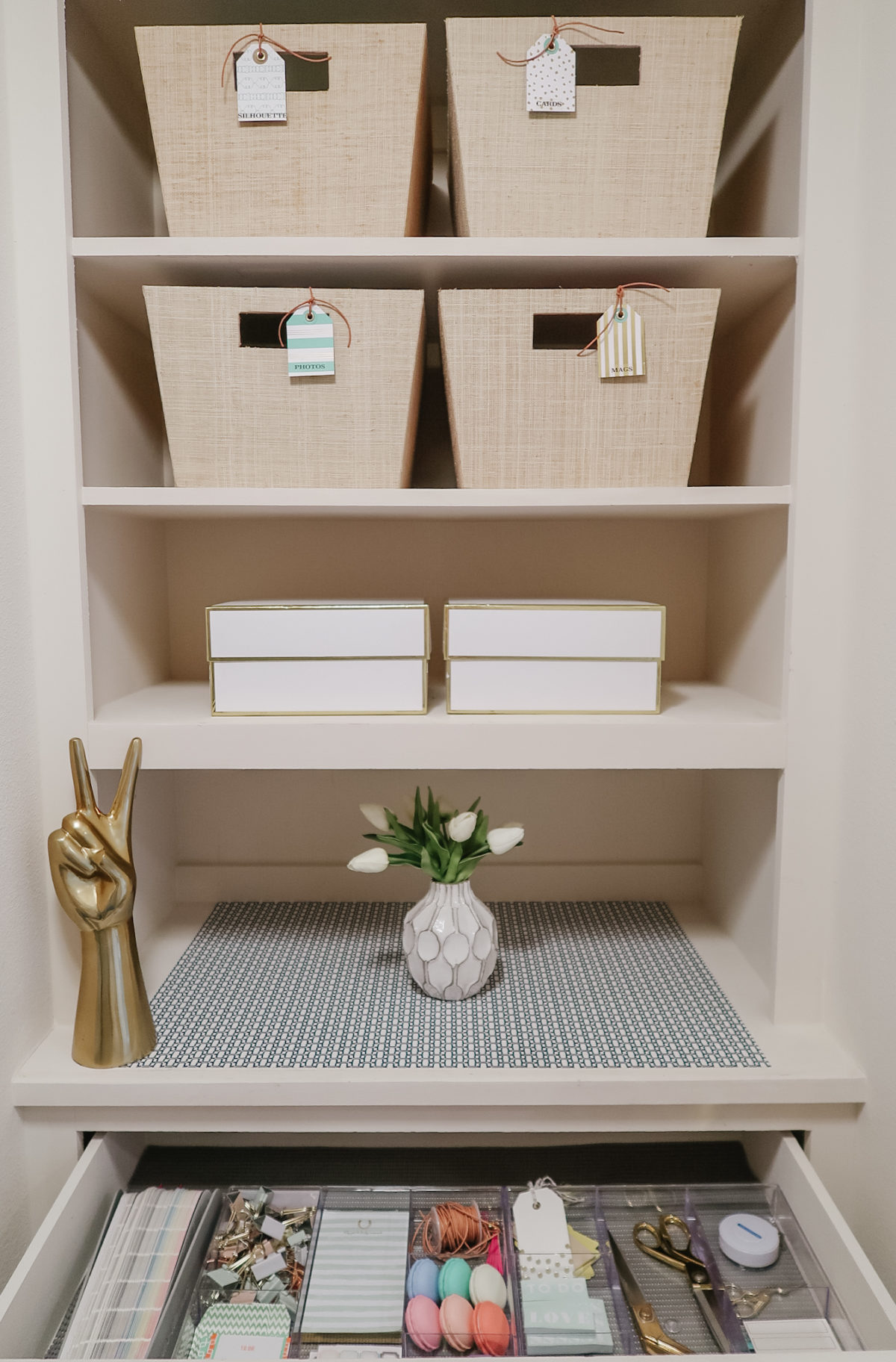
How to Start Decluttering When You’re Overwhelmed
The best way to start when you’re overwhelmed is by following simple steps to declutter your home, like picking one tiny space, such as a drawer, shelf, or corner you walk past every single day.
This keeps the task small enough to finish without getting discouraged before you even begin.
Set a timer for 10 to 20 minutes so you stay focused and know there’s a clear stopping point, even if you’re busy.
You don’t need to sort your whole house… just focus on that one little spot until it feels done and looks better.
Use a simple system with three piles: keep, toss, and donate, following a guide to decluttering that helps you avoid overthinking and makes decisions feel clear and manageable.
If something is broken or hasn’t been touched in over a year, chances are it’s safe to let it go.
Celebrate your small wins by noticing how peaceful the cleared space feels and how much easier it is to find what you need.
Take a photo of your progress to remind yourself how far you’ve come and stay motivated for the next space.
After that first win, choose another small area and repeat the same steps to slowly build momentum without burning out.
Starting small keeps you from getting stuck and makes the whole process feel less like a chore and more like real progress.
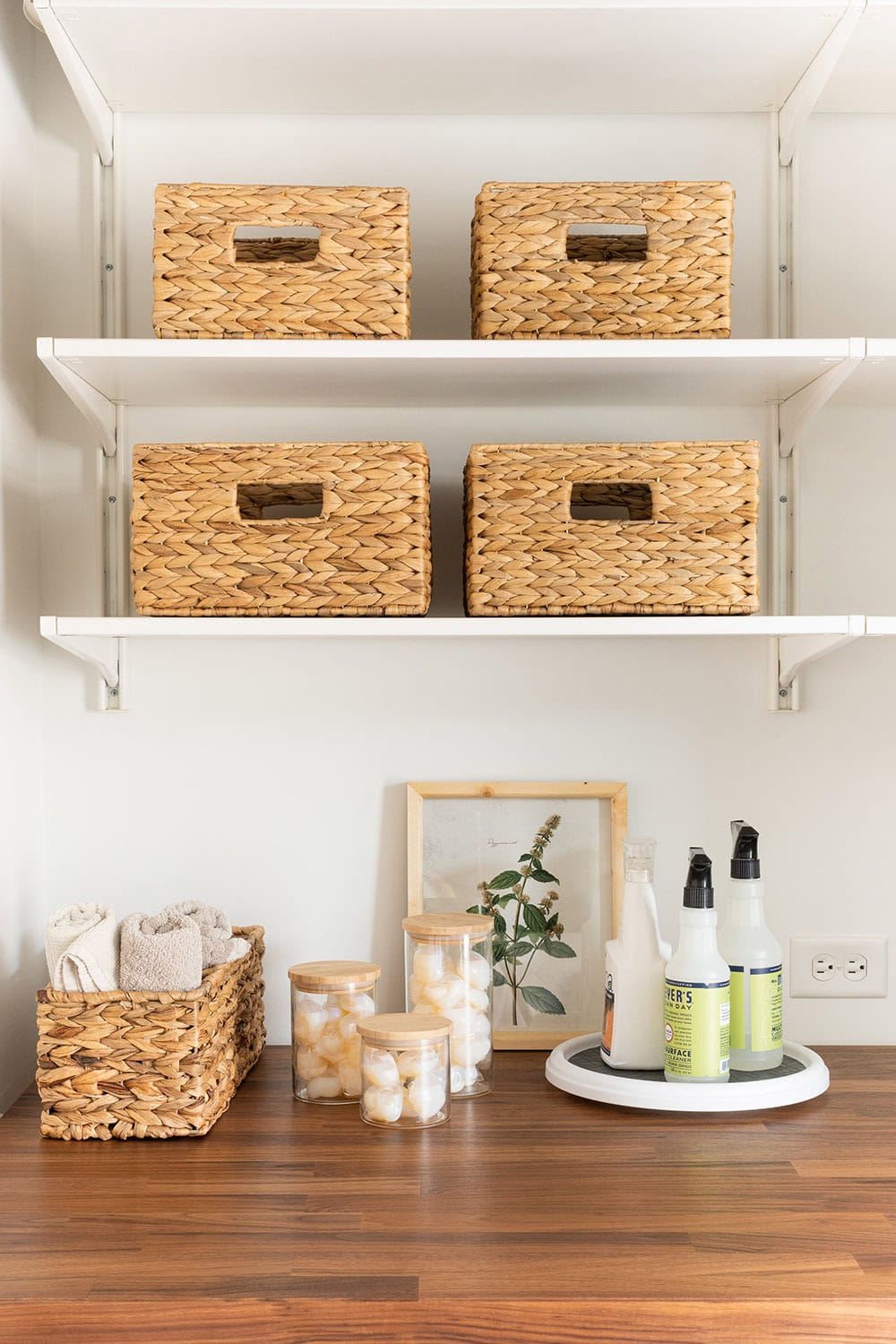
What You Need To Declutter Your Home
You don’t need a bunch of fancy tools to start clearing out your home, but a few simple items can make the job easier.
Having everything ready helps you stay focused and finish each space without stopping halfway through.
So, I’ve gathered the essentials to help you get started with easy ways to declutter your home, keeping the process stress-free, focused, and effective every time you begin.
Tap Photos To Shop
Would you like to save this post?
How to Declutter Each Room of Your Home Effectively
Decluttering your whole house can feel like a lot, but breaking it down room by room helps you stay focused and make real progress.
Start with the kitchen since it’s used daily. Toss expired food, wipe down shelves, and group tools by how often you use them.
In the living room, clear out anything that just sits around like old magazines, unused gadgets, or too many decorative items.
Move into the bedroom and edit your closet, clean off your nightstands, and keep only the bedding that feels good and gets used.
In the bathroom, toss anything expired or unused, then group your essentials so you can reach what you need without digging around.
Closets get full fast, so donate what doesn’t fit or suit your lifestyle and organize the rest by season, color, or category.
In the home office, sort paper into piles, shred what you no longer need, and donate or toss extra cords and outdated supplies.
For the garage or basement, look for bulky items, duplicates, or broken tools you’ve been avoiding, and finally let them go.
Work through each space using the same steps (empty, clean, sort, and organize) until everything feels more useful and easier to manage.
Taking it one area at a time keeps the process simple and helps your whole home feel more peaceful and easy to live in.
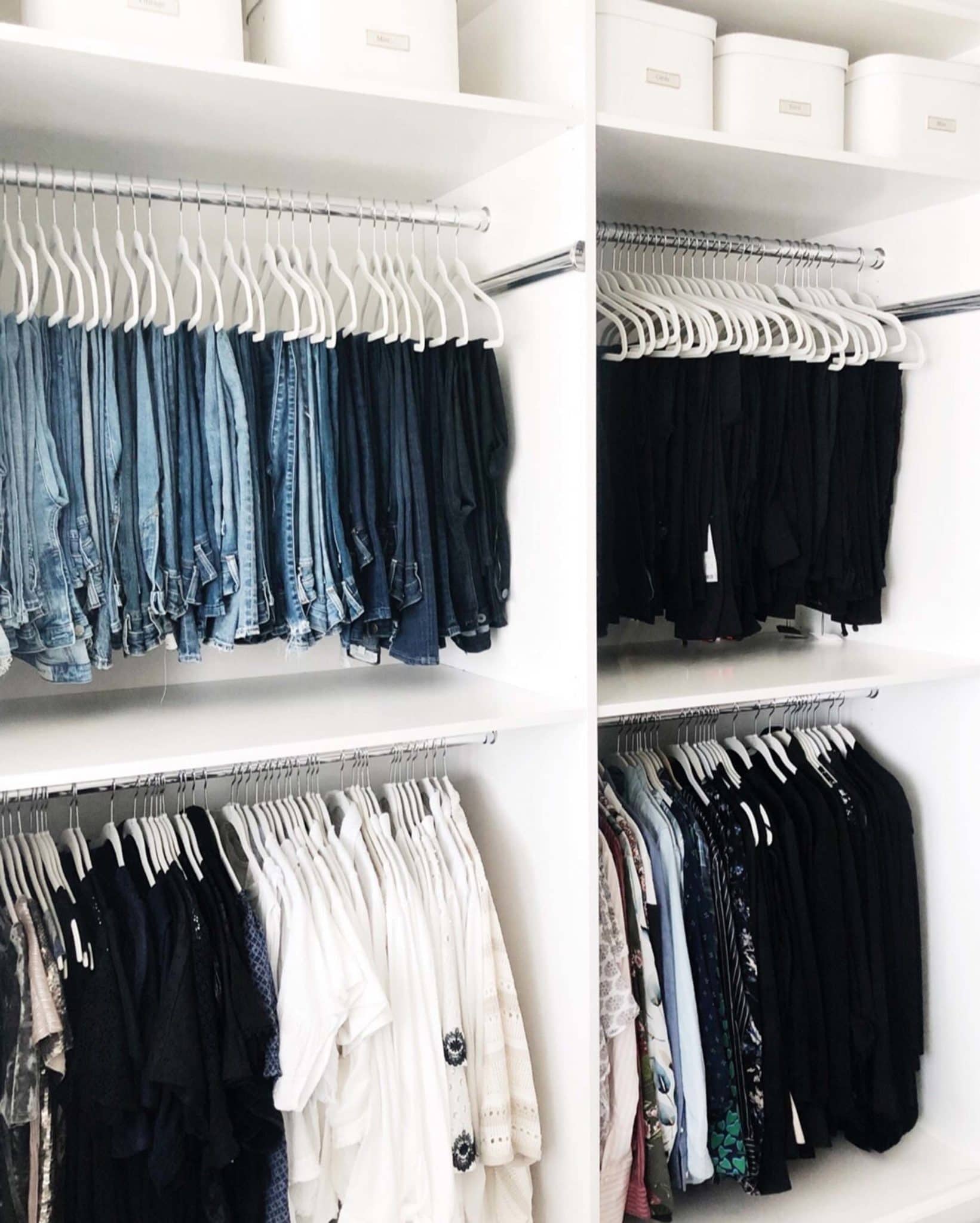
Common Decluttering Mistakes to Avoid
Trying to declutter your whole house in one day is a quick way to burn out and leave things messier than when you started.
It’s easy to hang onto items “just in case,” but if you haven’t used something in years, it’s probably not worth keeping anymore.
Buying new storage bins before decluttering often leads to stuffing clutter into prettier boxes without actually solving the problem.
Shifting things from one room to another gives a false sense of progress and just spreads the clutter around your home.
Another mistake is getting stuck on sentimental items too early, which can slow your momentum and leave you feeling stuck.
Don’t declutter without a plan because working without focus can lead to half-finished projects and more stress in the long run.
Keeping items out of guilt or obligation, like gifts you never used, takes up space that could be filled with things you truly enjoy.
Skipping the cleaning step can make even organized spaces feel dirty and unfinished, so always wipe down as you go.
Avoid aiming for perfection, because the goal is to make your home easier to live in, not to impress anyone else.
The biggest mistake is giving up too soon. Even small steps make a difference and help build lasting habits over time.
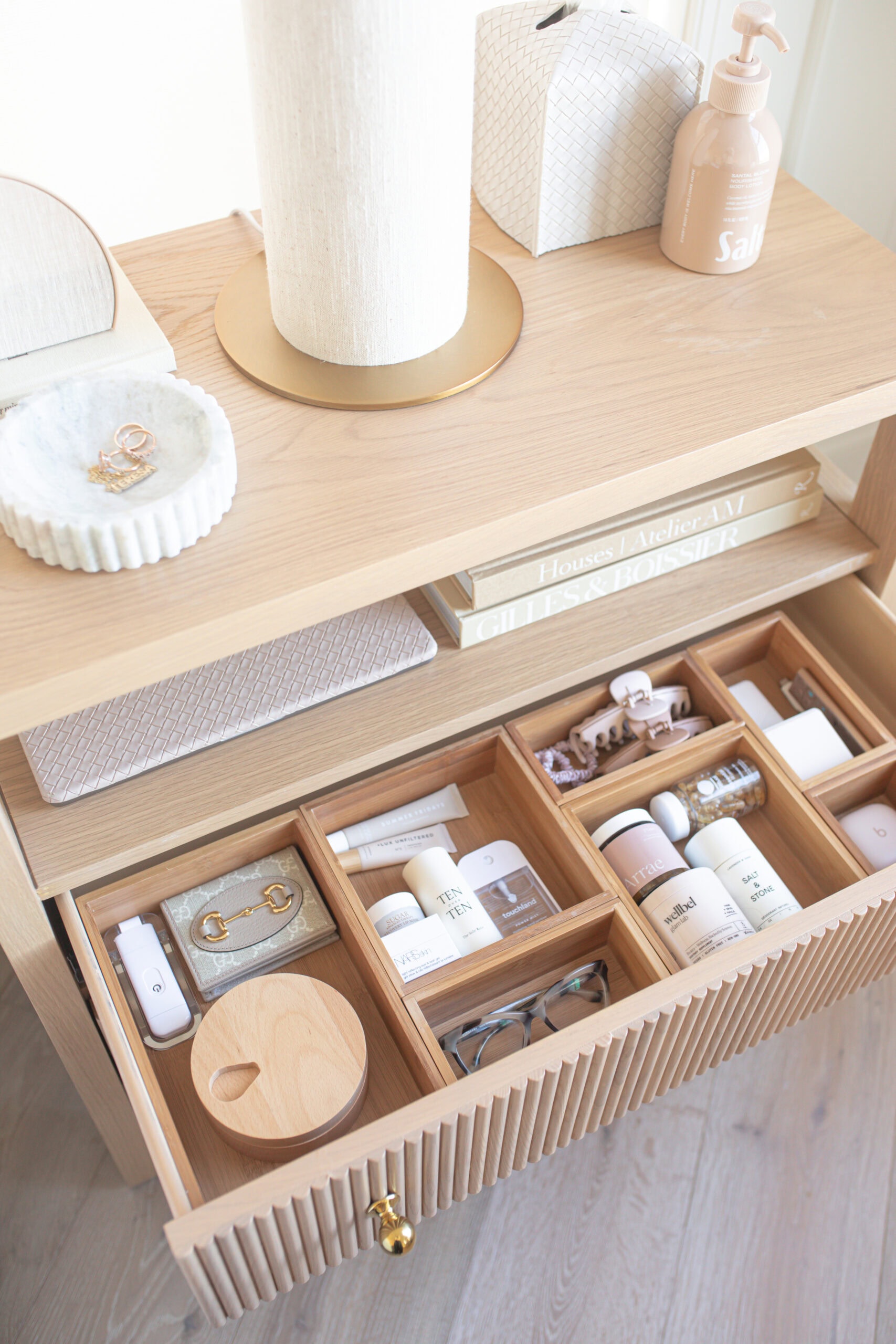
How to Keep Your Home Clutter-Free After a Big Declutter
Once your home feels clean and peaceful, keeping it that way takes simple habits that fit into your daily routine without overwhelming you.
Spend five minutes each evening putting things back, clearing surfaces, and resetting your space so it feels calm and tidy the next morning.
Before bringing something new home, ask yourself if you truly need it or if it will just create more clutter and stress later on.
Limit how much you keep by assigning a set space for each category, like one drawer for tools or one shelf for kitchen gadgets.
Keep an open donation box in a closet or garage so you can drop items in anytime instead of waiting for a big purge.
Set a reminder to do quick weekly or monthly check-ins where you return stray items and let go of what you no longer need.
Teach your household to always return things to their proper place so everyone helps maintain order and the home runs more smoothly together.
Avoid using extra bins or baskets to hide clutter that should be tossed or donated, because it just delays the mess from coming back.
Simplify your decor by reducing the number of items sitting out, making it easier to wipe surfaces clean and keep rooms looking fresh.
Being consistent is better than doing one big clean once a year because small habits keep your home clutter-free with less time and stress.
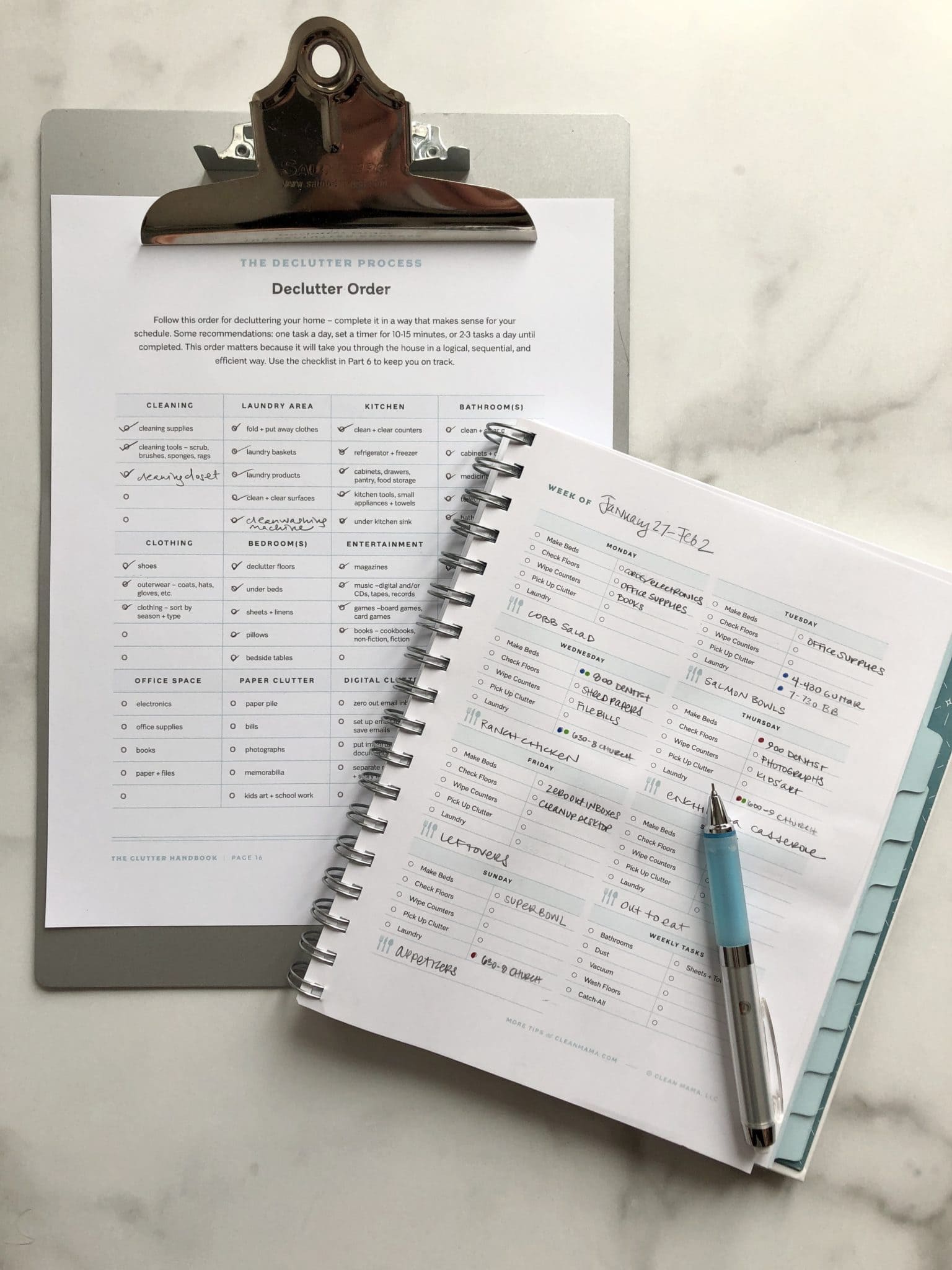
Frequently Asked Questions
Pick one small space like a junk drawer, bathroom shelf, or corner table so you can finish it quickly without getting stressed or distracted. Once you see how much better that area looks and feels, you’ll feel more confident to keep going and tackle the next space.
Give each person a simple task based on their age, like sorting toys or tossing old socks, to make it feel more manageable. Turn it into a group activity with music, snacks, or small rewards so everyone feels like part of the cleanup and not just a chore.
Useful items in good shape can be donated to shelters, local nonprofits, or community groups where someone else can put them to use. Anything broken, expired, or unusable should be tossed or recycled so it doesn’t end up back in your home, creating more mess.
Do small five-minute resets every day or weekly tidy-ups so clutter never has a chance to take over your space again. Every few months, pick one room for a deeper reset to check what’s building up and keep your home working for your real life.
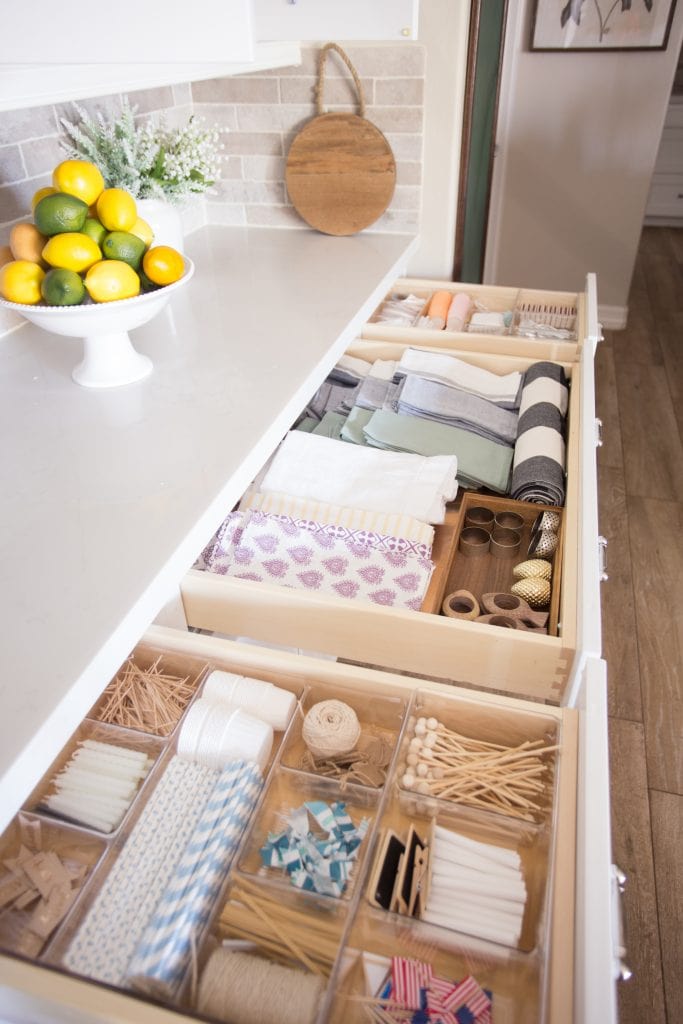
Clearing out your home takes time, but every small step makes a big difference in how your space feels and functions.
Understanding how to declutter your home effectively means learning what works for your lifestyle and setting up habits that last.
When you let go of things that no longer serve you, your home becomes easier to enjoy, clean, and live in daily.
It doesn’t need to be perfect or finished in one day… it just needs to start with one drawer, one shelf, or one decision.
The more you declutter, the more peaceful, useful, and comforting your home will become!


